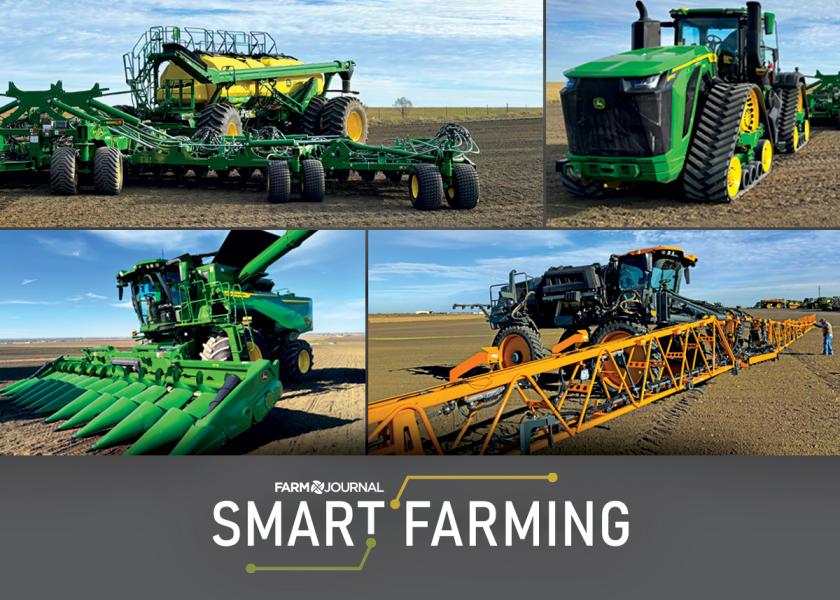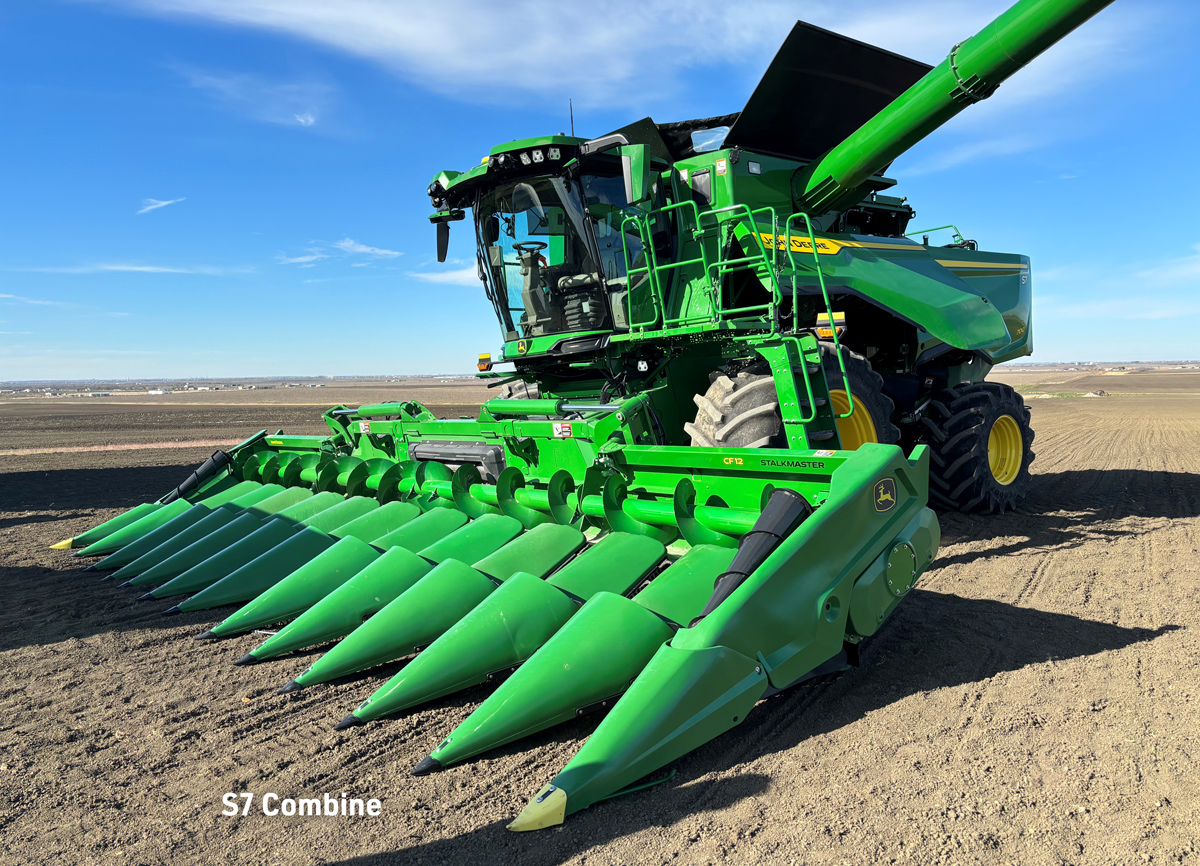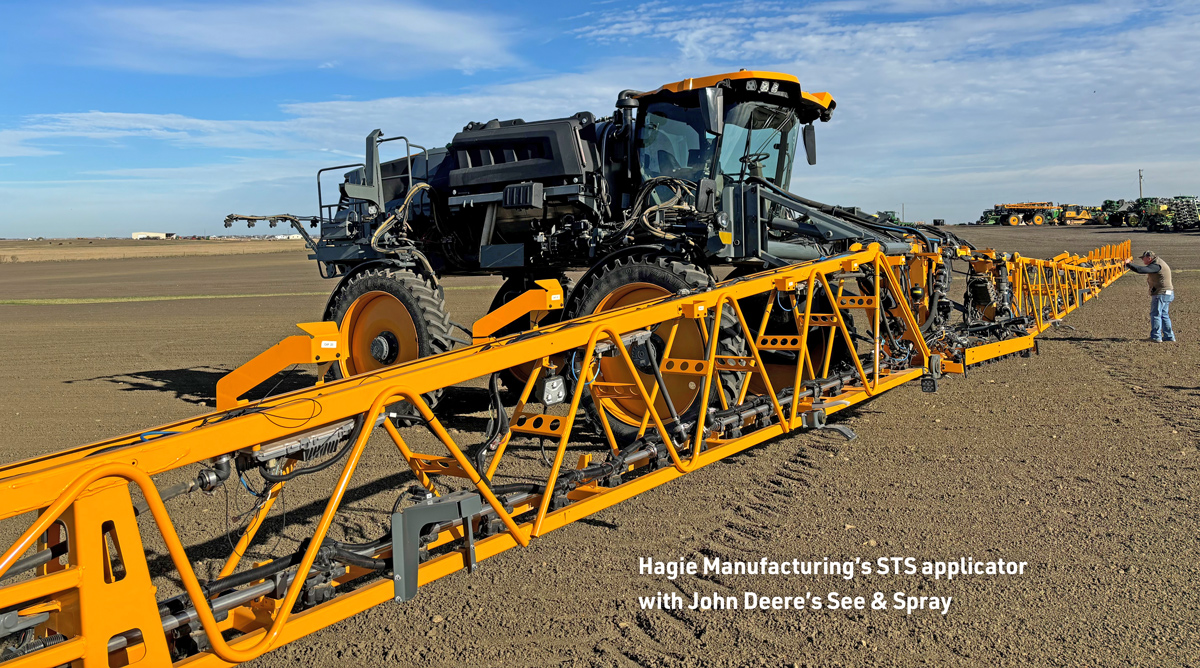John Deere Announces Tech Focused 2025 Introductions

You wouldn’t know it if you drove by, but off the main drag, down a gravel road 40 minutes outside of Austin, Texas, John Deere engineers and tech experts are field testing the companies’ latest innovations on some of the cleanest sandy-loam fields you’ll ever set eyes on.
This new John Deere is sleek and edgy, confident and disruptive. It’s not sitting back and letting the game come to it. Rather it’s aggressively attacking real problems with applied technology.
The company that was built from the ground up by a simple steel plow in 1837 is leaning hard into artificial intelligence, machine learning, networks of purpose-built cameras and sensors and data loggers, all with the latest edge processing capabilities on board. It’s a lot of work, albeit for one altruistic purpose, according to John Deere leaders: to make farmers’ and their families’ lives fuller and the ag industry at large more sustainable.
It’s exactly these types of evolutionary step changes that will in turn propel John Deere as it strives to achieve perhaps its most ambitious goal yet: demonstrating a fully functional, autonomous corn and soybean production system by 2030.
Combine Autonomy

John Deere’s model year 2025 S7 combine (available in 600, 700, 800 and 900) promises increased efficiency and enhanced operator experience, according to Chase Sanders, combine product marketing manager.
The Gen II 9.0-liter or optional 13.6-liter power systems check the increased efficiency box, while a new X9 cab and cross auger shutoff automation make for a comfortable operator experience. A new, larger G5PLUS Command Center display also made it into the cab.
Sanders says internal research has shown up to a 20% productivity boost in a single day of harvesting based on the newly configured combine.
There’s also an intriguing stack of ag tech automation capabilities integrated straight off the factory line. Sanders and his team at John Deere are excited on a couple of fronts there.
Predictive Groundspeed Automation is a new feature that uses front-facing cameras and machine learning algorithms to set and manage the combine’s groundspeed based on the amount of plant material ahead. The cameras scan 27 feet out, computing what the combine will encounter and optimizing the combine’s rate of forward travel for an efficient harvest. John Deere says this frees up the operator to monitor and respond to other aspects of the combine’s operation.
Harvest Settings Automation is another new feature that John Deere is excited to put in the hands of its customers. In the past the combine operator would have to monitor for grain loss and at times stop and adjust combine settings manually. This new feature lets the operator set a threshold for how much grain loss is acceptable, and the machine adjusts automatically within those acceptable grain loss parameters.
“You can harvest more acres per day, you can quickly optimize the machine for less grain loss, and you don’t have to make so many sudden adjustments, and then finally with the new larger display you have better visibility into what the system is doing, and you can interact with it and have more confidence as an operator,” Sanders says.
High-Horsepower 9RX Tractor

The 2025 9RX (710-hp, 770-hp and 830-hp models) with a ground up redesign is reconfigured for more towing power and operator comfort. John Deere sees this evolution as critical as farmers spend more time in the cab yet still hope to accomplish more with each field pass.
“You mix that increased power with how comfortable the ride and the new cab is, it’s really those two things combined where I’ve seen customers’ eyes light up,” says Bryan Earwood, large tractor product marketing manager.
Earwood thinks customers will enjoy coming up with new ways to deploy all the additional uphill towing capacity. Increased hydraulic flow (168 gal. per minute with a 40-hp boost as needed) enables more efficiency in seeding, like the model configuration we saw in action with a ProSeries Opener N560 F tillage implement and the new C850T air seeder cart for small grains.
“We’re seeing two times the cart load and speed increases of 1 mph when taking on hills,” says Earwood, noting one of John Deere’s test farmers took the same setup to his steepest hills and the 9RX took everything the farmer threw at it.
The new C850T air cart features AccuRate stainless steel electric seed meters, EZCal seed meter calibration and integrated tank scales. It handles an array of cereals seeds and will be available in configurations from 350 bu. to 850 bu. An optional liquid-capable middle tank is also available in sizes from 3,720 liters to 4,800 liters.
Hagie High-Clearance + See & Spray

Ray Hagie invented the world’s first self-propelled crop sprayer in 1947 in Clarion, Iowa, so perhaps it’s only fitting the latest in application technology finds a home on the 2025 Hagie STS sprayer.
We were able to see Hagie’s newest STS model with a 120' boom dotted by cameras, sensors and processing units as it traversed the near immaculate fields at the test farm. John Deere reps had tossed some old corn stalks around the grounds to showcase its accuracy in determining weed vs. crop vs. bare ground. The units now 98%-plus accuracy did not disappoint.
“And it comes with John Deere technology too, so it has ExactApply for row-by-row and nozzle-by-nozzle control, the larger G5 display with faster processing and better resolution, and our integrated StarFire receiver and JDLink modem,” says Tim Deinert, sprayer go-to-market manager.
Most notable among those innovations is its factory-integrated See & Spray Premium, or what John Deere calls its “green on green’ single tank solution, option for model year 2025.
“If you can have a cleaner field, for a lower cost, that's a win-win for growers,” Deinert says. “You can increase your yields and reduce your input costs. It's a big disrupter for the application space because we're going to change how people approach the growing season. We’ve already done that, but more and more people are going to get their hands on this technology now and it’s going to change how they farm.”
Of course, anytime you tell a farmer they can produce the same yields (or even more) with less crop inputs – be it nitrogen, water, or in this case, herbicide, red flags are thrown up. John Deere envisions a future where less capital is spent on weed eradication and that annual spend is reinvested into other areas of the farm.
“Often the question in a growers’ mind is ‘How can I get a cleaner field at a lower cost’ where maybe in the past I was sacrificing a certain amount of the field being clean because I only wanted to spend so much money,” Deinert says. “It’s almost like adding a smart thermostat to your house — you can reduce temperatures during the day when everyone is out of the house, and then make it even more comfortable when the family is home at night because of how much energy you’re saving during the day.”
Hagie’s Kevin Marshall, marketing lead, says feedback on the integration and its field performance and reliability have been positive thus far. A limited number of machines with See & Spray Premium were selectively released in 2023. Now, the full rollout is poised to hit the countryside.
“The cameras and the sensors [on this machine] are not really a completely new technology,” he says. “What we’re really doing is taking that technology to scale – so we now need 36 cameras. It always comes back to cost savings and product savings for the farmers, though.”
Want to See the Model Year 2025 Class?

John Deere is unveiling its model year 2025 intros to the greater public for the first time this week in Houston at Commodity Classic. If you’re at the show, stop by the John Deere booth to learn more. If not, your local John Deere dealer is always your best resource for new product information.







